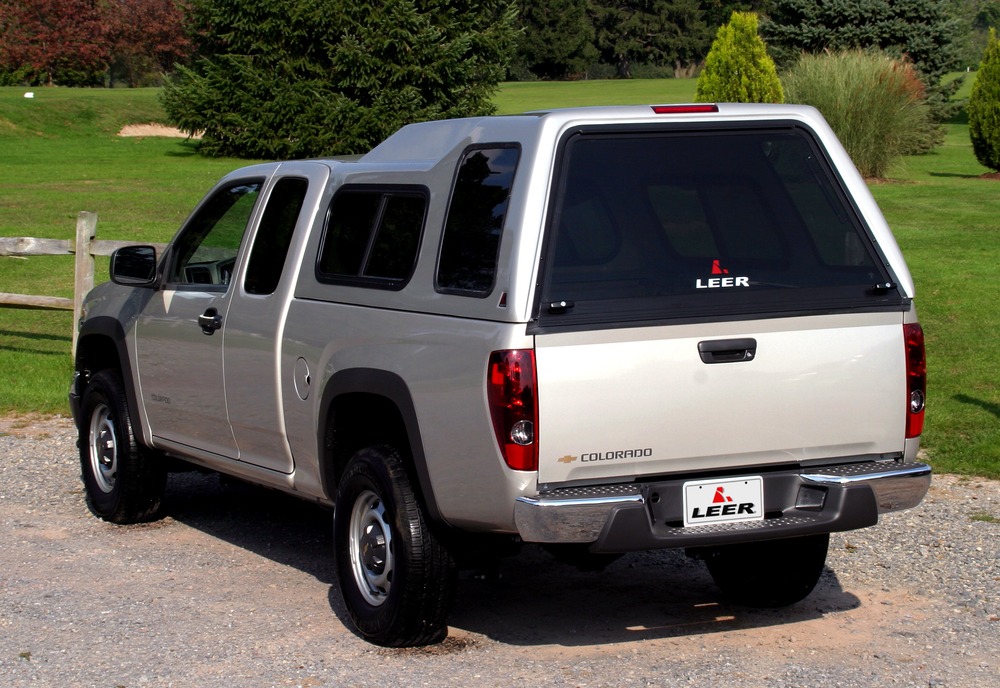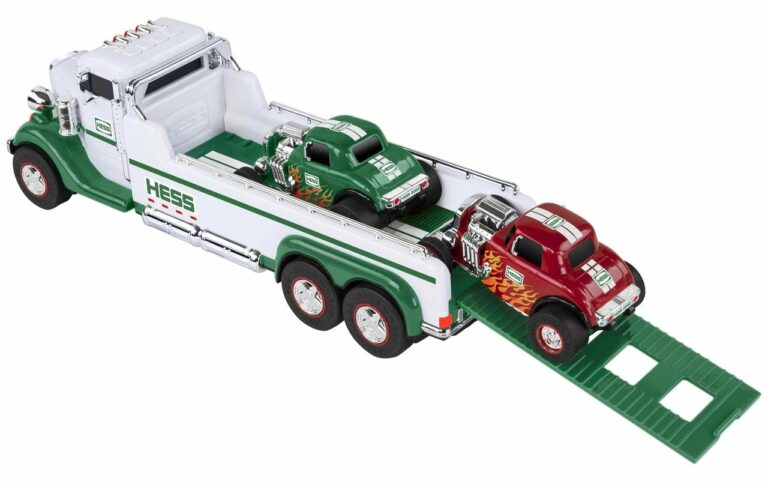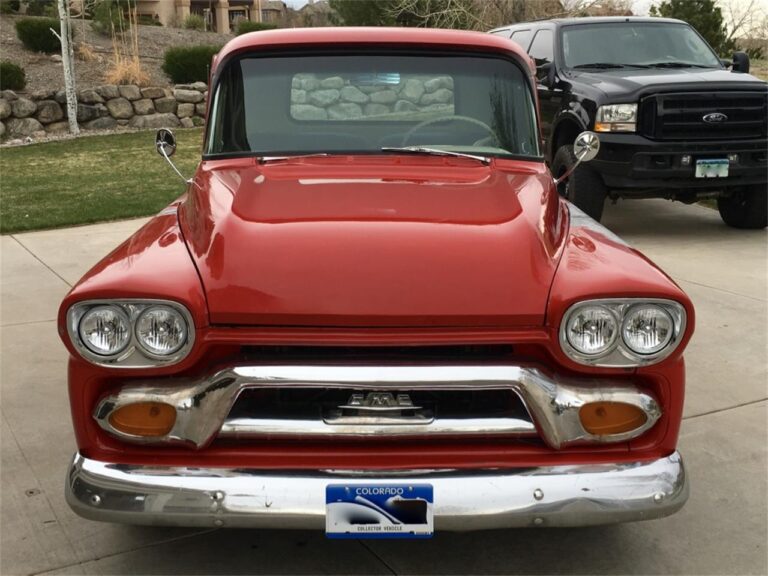Could Someone Tell Me The Truck Cap Size For A 2020 Colorado? Your Definitive Guide
Could Someone Tell Me The Truck Cap Size For A 2020 Colorado? Your Definitive Guide cars.truckstrend.com
For owners of the versatile 2020 Chevrolet Colorado, the desire to enhance its utility and security often leads to considering a truck cap, also known as a truck shell or topper. A well-fitted truck cap transforms your open bed into a secure, weather-protected storage area, ideal for tools, camping gear, or even an impromptu sleeping space. However, the seemingly simple question, "Could someone tell me the truck cap size for a 2020 Colorado?" is more nuanced than a single, universal answer.
The truth is, there isn’t one definitive "size" for a 2020 Colorado truck cap because the truck itself comes in different bed configurations. The critical factor is matching the cap precisely to your specific Colorado’s bed dimensions. This comprehensive guide will walk you through everything you need to know, from understanding your truck’s specifications to measuring accurately, exploring cap types, and making an informed purchase.
Could Someone Tell Me The Truck Cap Size For A 2020 Colorado? Your Definitive Guide
Understanding Your 2020 Colorado Bed Sizes: The Foundation of Fit
The 2020 Chevrolet Colorado, like many pickup trucks, is available with different bed lengths. This is the primary determinant for truck cap sizing. For the 2020 model year, the most common bed configurations are:
- Crew Cab Short Box (5’2" bed): This is the more common configuration, often paired with the Crew Cab body style. The approximate nominal length is 61.7 inches (or roughly 5 feet, 2 inches).
- Crew Cab Long Box / Extended Cab Long Box (6’2" bed): This longer bed offers more cargo capacity and is available with both Crew Cab and Extended Cab configurations. The approximate nominal length is 74.0 inches (or roughly 6 feet, 2 inches).
It’s crucial to identify which bed length your 2020 Colorado has. While the nominal lengths are helpful, precise measurements are still required for a perfect fit, as manufacturers design caps to very specific tolerances.
The Critical Measurements for a Perfect Truck Cap Fit

To ensure your truck cap fits snugly, securely, and aesthetically pleasingly, you’ll need more than just the nominal bed length. Here are the critical dimensions you’ll need to consider and measure:
- Bed Length: This is the most crucial measurement. Measure from the inside of the bulkhead (the wall closest to the cab) to the inside of the closed tailgate. Do this measurement at the top of the bed rails.
- Bed Width: Truck beds are not perfectly rectangular, and their width can vary slightly from the bulkhead to the tailgate. Measure the inside width of the bed at both the bulkhead and near the tailgate, at the top of the bed rails. The cap needs to accommodate the widest point.
- Bed Rail Profile/Width: Truck caps sit on the bed rails. The cap’s base must match the contour and width of your Colorado’s bed rails to create a weather-tight seal and a clean appearance. Some trucks have wider or narrower rails, or specific contours that a generic cap might not accommodate.
- Cab Height/Roof Line (for Cab-High Caps): If you desire a "cab-high" cap – one that aligns perfectly with the height of your truck’s cab roof – you’ll need to measure the vertical distance from the top of your bed rails to the highest point of your cab’s roof. This ensures a seamless look. Mid-rise and high-rise caps extend above the cab, so this measurement is less critical for them, but still useful for understanding overall height.

How to Accurately Measure Your 2020 Colorado Truck Bed: A Step-by-Step Guide
Accurate measurements are paramount. Don’t rely solely on online specifications, as minor manufacturing variances or aftermarket bed liners can affect the fit.
What You’ll Need:

- A long, reliable tape measure (at least 25 feet)
- A pen and paper to record measurements
- (Optional) A helper for easier measuring
Steps for Measuring:
- Clear the Bed: Remove any bed liners, cargo, or obstructions that might interfere with accurate measurements.
- Measure Bed Length:
- Position the end of your tape measure firmly against the inside of the bulkhead at the top of the bed rail.
- Extend the tape measure straight back to the inside edge of your closed tailgate, also at the top of the bed rail.
- Record this measurement precisely. Repeat it a few times to ensure consistency.
- Measure Bed Width:
- Measure the inside width of the bed from rail to rail.
- Take this measurement at two key points:
- Near the bulkhead (front of the bed).
- Near the tailgate (rear of the bed), as this is often the widest point.
- Record both measurements.
- Measure Bed Rail Width/Profile:
- Visually inspect the top of your bed rails. Are they flat, or do they have a specific contour or lip?
- Measure the approximate width of the flat surface of the rail where the cap will sit. While cap manufacturers account for common rail profiles, understanding yours can help when discussing options with a dealer.
- Measure Cab Height (for Cab-High Caps):
- Place the end of your tape measure on the top of your truck’s bed rail, directly above where the cab meets the bed.
- Extend the tape measure vertically to the highest point of your truck’s cab roof. Be sure to account for any antenna or roof rack if you intend the cap to clear it.
- Record this measurement.
Tips for Accuracy:
- Always measure twice (or three times!).
- Use a sturdy, non-flexible tape measure.
- Ensure the tape measure is level and straight for all measurements.
- Round to the nearest 1/8th or 1/16th of an inch for precision.
Types of Truck Caps and Their Suitability for the 2020 Colorado
Once you have your measurements, you can explore the types of caps available:
- Cab-High Caps: These are designed to match the height of your Colorado’s cab, providing a sleek, integrated look. They offer good weather protection and security without significantly altering the truck’s profile. Ideal for general utility and aesthetics.
- Mid-Rise Caps: Offering a bit more interior height than cab-high models (typically 2-4 inches higher than the cab), mid-rise caps provide increased cargo volume while still maintaining a relatively streamlined appearance. Great for slightly larger gear.
- High-Rise/Commercial Caps: These caps maximize interior cargo space, often extending significantly above the cab. They are popular for commercial use, offering ample room for tools, equipment, or even comfortable camping. They may come with side access doors, shelving options, and heavy-duty construction.
- Sport/Adventure Caps: Some manufacturers offer specialized designs with unique features like integrated roof racks, enhanced ventilation, or specific styling cues for outdoor enthusiasts.
Most caps are made from fiberglass (for a paint-matched, automotive finish) or aluminum (for durability, lighter weight, and often a lower cost, though aesthetics might be secondary).
Important Considerations Beyond Size
Beyond the dimensions, several other factors influence your choice:
- Material: Fiberglass offers a smooth, paint-matched finish, while aluminum is lighter and often more robust for commercial use.
- Features: Consider windows (sliding, tilt-out, fixed), locking mechanisms, interior lighting, headliners, roof rack options, side access doors, and ventilation.
- Weight: A heavier cap can impact fuel economy and potentially require suspension upgrades if you frequently carry heavy loads.
- Installation: While some can be DIY, professional installation ensures a proper seal, secure mounting, and correct electrical wiring for lights/locks.
- Budget: Caps range significantly in price based on material, features, and brand.
- Aesthetics: Do you want it to blend seamlessly with your truck, or is pure utility your goal? Paint matching is a common desire for fiberglass caps.
Finding the Right Cap: Resources and Recommendations
The best way to find the perfect cap for your 2020 Colorado is to:
- Consult Authorized Dealers: Visit local authorized dealers for major brands like Leer, ARE, SnugTop, ATC, or TruXedo. They have detailed fitment guides for your specific truck model and can advise on options, provide quotes, and handle professional installation.
- Manufacturer Websites: Explore the websites of reputable cap manufacturers. They often have "build your own" tools or fitment guides where you can input your truck’s year, make, model, and bed length to see compatible options.
- Online Forums/Communities: Colorado owner forums or truck accessory communities can offer real-world reviews, photos, and advice from other owners who have gone through the same process.
- Used Market: If considering a used cap, extreme caution is advised. You must verify the cap came off the exact same year, make, model, and bed length of truck as yours. Even then, minor differences in rail profiles can lead to poor fit or leaks. Always test fit before buying.
Estimated Truck Cap Pricing for a 2020 Colorado
The cost of a truck cap for a 2020 Colorado varies widely based on brand, material, features, and region. The table below provides estimated price ranges for new caps, excluding installation costs which typically range from $150-$400.
| Cap Type/Material | Estimated Price Range (USD) | Key Features |
|---|---|---|
| Basic Aluminum Shell | $1,000 – $1,800 | Lightweight, durable, plain finish (often white or black), basic rear door, no windows or minimal side windows. Utility-focused. |
| Entry-Level Fiberglass | $1,800 – $2,500 | Cab-high or mid-rise, paint-matched exterior, basic rear door, fixed side windows, manual locks. Good balance of aesthetics and protection. |
| Mid-Range Fiberglass | $2,500 – $3,500 | Cab-high or mid-rise, paint-matched, sliding side windows with screens, interior dome light, carpeted headliner, stronger locking mechanisms. |
| Premium Fiberglass | $3,500 – $5,000+ | Cab-high or mid-rise, custom paint match, frameless/flush windows, remote keyless entry, power locks, LED lighting, roof rack pre-installation. |
| Commercial/High-Rise | $2,800 – $6,000+ | Aluminum or heavy-duty fiberglass, maximum interior height, side access doors (often with toolboxes), heavy-duty roof racks, interior shelving. |
Note: These are estimates for new caps. Prices can fluctuate due to material costs, labor, specific features, dealer markups, and geographic location. Always get a direct quote from an authorized dealer.
Frequently Asked Questions (FAQ)
Q1: Can I use a truck cap from a different make/model truck on my 2020 Colorado?
A1: Generally, no. Truck beds vary significantly in length, width, rail contour, and even tailgate design between different truck models and manufacturers. A cap designed for a Ford F-150, for example, will almost certainly not fit a Chevy Colorado properly, even if the nominal bed length seems similar.
Q2: Do I really need to measure the cab height if I want a cab-high cap?
A2: Yes, absolutely. While most manufacturers design their "cab-high" models to match the typical cab height of a 2020 Colorado, minor variations in your truck (e.g., suspension modifications) or the cap’s design could lead to a slight mismatch. Measuring ensures a truly flush look.
Q3: What’s the main difference between fiberglass and aluminum caps?
A3: Fiberglass caps offer a sleek, automotive finish that can be paint-matched to your truck, providing a seamless look. They are generally heavier and more expensive. Aluminum caps are lighter, often more rugged, and typically more affordable, making them popular for commercial or utility use where aesthetics are less critical.
Q4: How long does professional installation take?
A4: Professional installation for a standard truck cap typically takes 1-3 hours, depending on the complexity of wiring (for lights, locks) and any additional accessories being installed.
Q5: Will adding a truck cap affect my fuel economy?
A5: A truck cap can have a minor impact on fuel economy. While some argue it improves aerodynamics by smoothing airflow over the bed, others find the added weight and increased frontal area (especially with high-rise caps) can slightly decrease MPG. The effect is usually minimal for cab-high caps but can be more noticeable with heavier, taller designs.
Q6: Can I paint match a used truck cap?
A6: Yes, fiberglass caps can be repainted to match your truck’s color. However, this adds to the overall cost and should be factored into your budget if you’re buying a used cap that isn’t already the correct color.
Concluding Summary
Determining the correct truck cap size for your 2020 Chevrolet Colorado is not about finding a single universal dimension, but rather about precisely measuring your specific truck’s bed and understanding the various cap types and features available. By accurately measuring your bed length, width, and cab height, and then consulting with reputable cap dealers, you can ensure a perfect fit that enhances your Colorado’s functionality, security, and appearance. Investing the time in proper research and measurement will lead to a highly satisfying and long-lasting addition to your truck.






